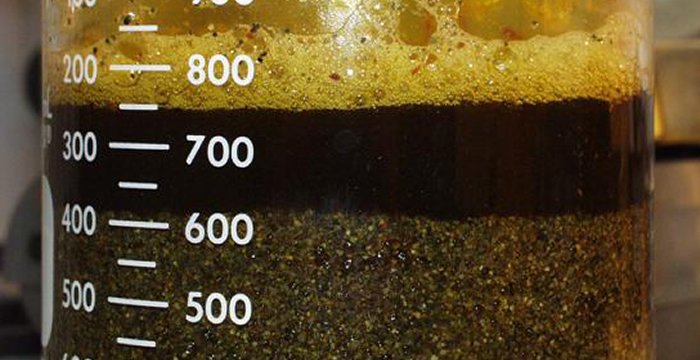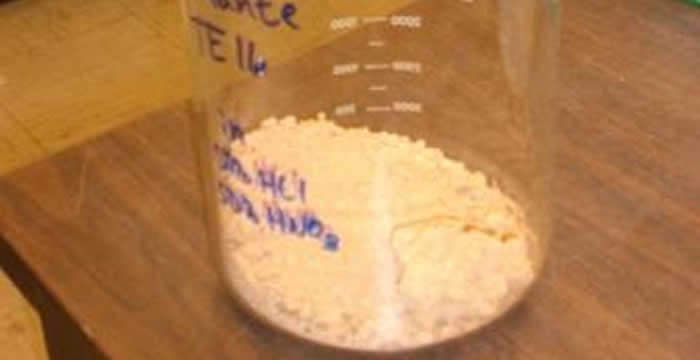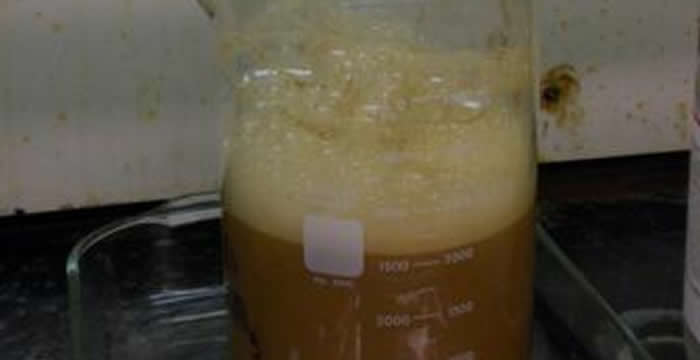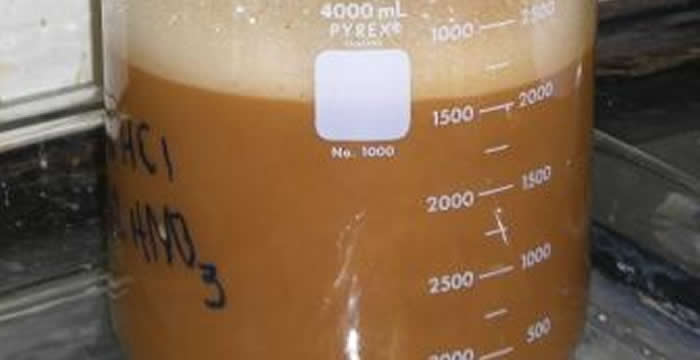Aqua Regia
The purpose of this step is to remove carbonates and residual metals (introduced to the sample through the crushing process) from the sample.
Procedure
Note: All beakers containing acid or other dangerous substances must be labeled appropriately. Because this procedure uses acids, it is always performed in a fume hood.
- Write "HCl/HNO3" on a 4 L beaker containing a rinsed sample.
- Add enough DI to cover the sample, assuming the sample surface is level. If not, add enough water to allow water to pond on one side of the beaker. Take note of the approximate volume of water plus sediment in the beaker.
- Slowly add nitric acid to the ponded water. Be careful! If there is calcite in the sample, the reaction may be violent. Add about half as much nitric acid as there was sediment and water in the last step. That is, if the beaker was filled to 1000 ml in step 2, add about 500 ml of nitric acid.
- Add about the same amount of hydrochloric acid to the mixture and cover with an evaporation plate.
- As a general rule, the volume of acids added is equal to the volume of the sample and water in the beaker.
- Cover the beaker with an evaporating dish. Let the beaker stand in the fume hood overnight. Be sure to close the hood glass to the "storage" height.
- Based on the amount of carbonates in the sample, this step may need to be repeated several times.




